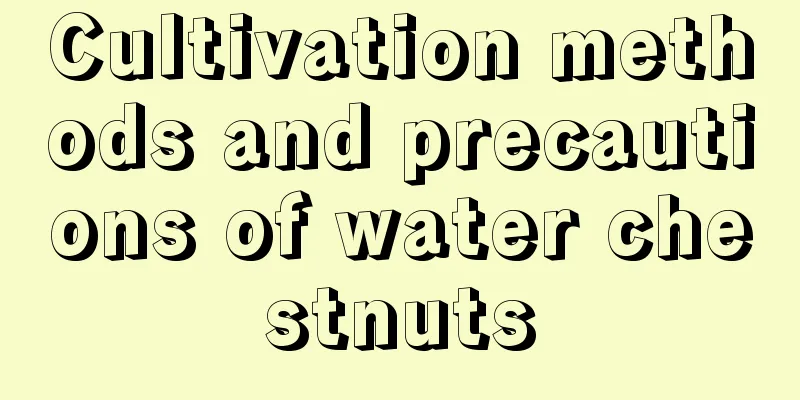Cultivation methods and precautions of water chestnuts

How to cultivate water chestnutssoilWater chestnuts require nutritious soil with strong water and fertilizer retention capabilities, but the soil layer cannot be too deep. The soil needs to be rich in organic matter and a certain amount of base fertilizer should be applied. It should be loose and have a slightly acidic or neutral pH. Light and temperatureWater chestnut prefers a growing environment with sufficient light and a relatively mild temperature. It requires sufficient light but not too much shade, especially during the heading period of water chestnut, when it needs more sufficient light. The temperature should be controlled within a relatively warm range. It is not frost-resistant. Pay attention to making the bulbs dormant in winter. Basically, the temperature should be maintained between 20℃ and 30℃. The temperature in winter should also be maintained at 7℃ to 12℃. Watering and fertilizingWater chestnut is an aquatic plant and needs to be watered frequently to maintain a shallow water layer. In the early stages of growth, keep the water level at 3-5cm, keep it at around 10-15cm during the vigorous growth period, lower it to 10cm during the heading period, and just keep the soil moist in winter. During the growth period, water chestnuts have a greater demand for fertilizer, so appropriate topdressing can be applied with a reasonable combination of nitrogen, phosphorus, potassium and other elements. Apply 2-3 times during the growth period and once during the heading period. Precautions for the cultivation of water chestnutsPests and diseasesThe main pests of water chestnut are aphids and borers, which have a great impact on leaves and plants, and need to be sprayed with pesticides in time. The main disease is powdery mildew. When the disease occurs, the diseased leaves can be removed and destroyed. When the disease is serious, pesticides need to be sprayed. ReproductionThe basic method of propagation of water chestnut is seedling transplanting. After the top buds of the seeds are germinated, seedlings are raised. Under suitable climatic conditions, planting can be carried out. |
<<: Cultivation methods and precautions of Lobelia
>>: Sawdust can also be used to grow flowers, so practical
Recommend
The difference between sea tiger orchid and aloe arborescens
Difference 1: Leaves The leaves of the sea tiger ...
The correct way to fertilize cowpea
Cowpea is a common vegetable in our lives. When f...
How to plant roses to make them bloom more (how to make potted roses bloom more)
Roses are dignified and beautiful, with large and...
How to grow Chlorophytum and Pothos and precautions
Growth habits of Chlorophytum comosum Chlorophytu...
Common pests of dragon blood tree and their control methods
Red Spider Symptoms Due to the dry environment, i...
How to grow potted lemons? Cultivation methods and maintenance matters
Lemon pot cultivation method 1. Potting soil: Whe...
How to make the green radish climb up and wrap it around the green radish column
1. How to make the green radish climb up 1. Fix w...
How and when to plant ice grass
Before cultivating ice grass, you must first sele...
Taboos of camellia cultivation
1. Avoid exposure to the sun It usually likes hig...
How to prune juniper bonsai
Pruning methods Juniper is the most suitable mate...
What does it mean when asparagus fern blooms?
1. Meaning The flowering of asparagus fern has a ...
What is Roselle? Roselle pictures
1. What kind of flower is it? Roselle is also kno...
Green pepper planting time and method
Green pepper planting time Green peppers are most...
How to prune the euphorbia pulcherrima and the method and time of pruning
Pruning time of cycad The Chinese lucky tree need...
How to manage eggplant in summer?
Growing eggplant in the summer is essential to me...









